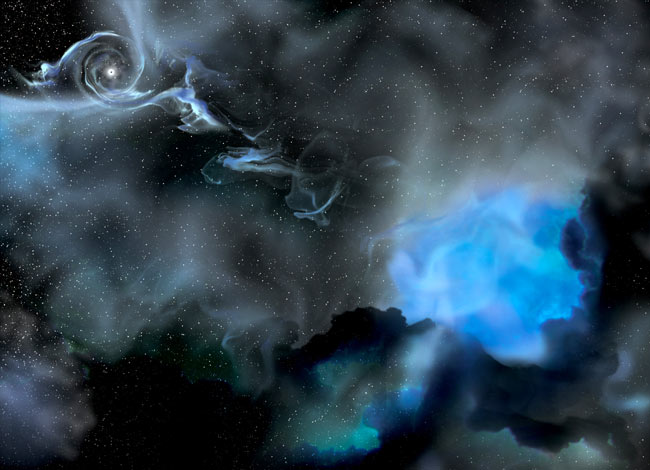Massive Stellar Black Hole Smashes Record

The heaviest "small" black hole ever has been discovered, and its mass of 24 to 33 times that of our sun defies current theories to explain its formation, scientists say.
The new record setter, announced by NASA today, shatters an already puzzling weight record set earlier this month.
Black holes trap all matter and light entering them and can't be seen directly, so scientists detect them by noting their gravitational effects on other objects or by the radiation emit.
The newfound object belongs to a class of black holes formed during the final death throes of massive stars. These "stellar" black holes are generally around 10 solar masses.
"We weren't expecting to find a stellar-mass black hole this massive," said study team member Andrea Prestwich of the Harvard-Smithsonian Center for Astrophysics in Cambridge. "It seems likely that black holes that form from dying stars can be much larger than we had realized."
The new black hole, detailed in the Nov. 1 issue of Astrophysical Journal Letters, is located in the nearby dwarf galaxy IC 10, 1.8 million light-years from Earth in the constellation Cassiopeia.
As large as it is, the new stellar black hole is still tiny compared to "supermassive" black holes, which are thought to lie at the heart of many galaxies and can have masses of million to billions times that of our sun.
Breaking space news, the latest updates on rocket launches, skywatching events and more!
New record holder
The previous record holder for largest stellar-mass black hole was a 16-solar-mass black hole in the galaxy M33 announced just two weeks ago.
As with that case, scientists were able to calculate the new black hole's mass because it is in a rare alignment with its companion star. Viewed from Earth, the star periodically passes directly in front of the black hole, blocking its X-rays. The periodic changes in the black hole's X-ray brightness were detected in Nov. 2006 by NASA's Chandra X-ray Observatory. Follow-up observations by NASA's Swift satellite and the Gemini Telescope in Hawaii confirmed the eclipses and revealed details about the star's orbit.
Using this information, Prestwich's team calculated how fast the two objects were orbiting each other and their masses.
The team pegs the black hole's mass at 24 suns at minimum, but there are still some uncertainties in the estimate. "Future optical observations will provide a final check," Prestwich said. "Any refinements in the IC 10 X-1 measurement are likely to increase the black hole's mass rather than reduce it."
Anemic black holes
Scientists estimate that the host star from which the black hole formed had a mass of about 60 or more solar masses. Most stars shed most of their mass when they explode as supernovas prior to becoming black holes. The host star was likely deficient in elements heavier than hydrogen and helium, scientists speculate, which are more prone to being swept away by stellar winds.
"Massive stars in our galaxy today are probably not producing very heavy stellar-mass black holes like this one," said study team member Roy Kilgard of Wesleyan University in Middletown, Conn. "But there could be millions of heavy stellar-mass black holes lurking out there that were produced early in the Milky Way's history, before it had a chance to build up heavy elements."
- VIDEO: Black Hole Diving
- Vote Now: The Strangest Things in Space
- Top 10 Star Mysteries

Space.com is the premier source of space exploration, innovation and astronomy news, chronicling (and celebrating) humanity's ongoing expansion across the final frontier. Originally founded in 1999, Space.com is, and always has been, the passion of writers and editors who are space fans and also trained journalists. Our current news team consists of Editor-in-Chief Tariq Malik; Editor Hanneke Weitering, Senior Space Writer Mike Wall; Senior Writer Meghan Bartels; Senior Writer Chelsea Gohd, Senior Writer Tereza Pultarova and Staff Writer Alexander Cox, focusing on e-commerce. Senior Producer Steve Spaleta oversees our space videos, with Diana Whitcroft as our Social Media Editor.
